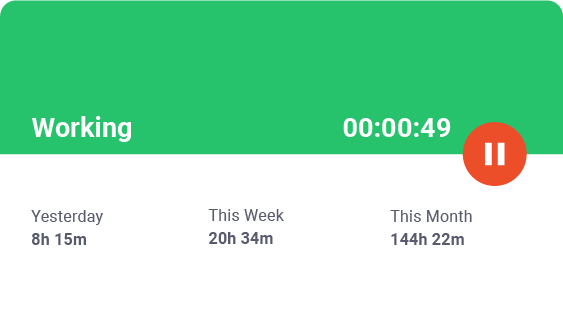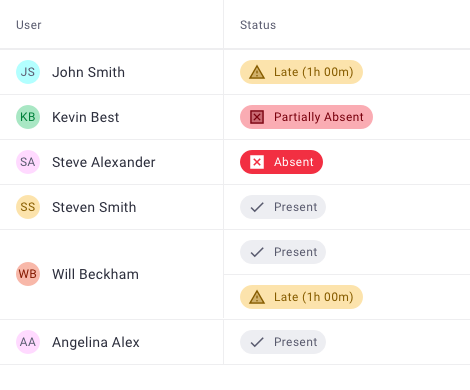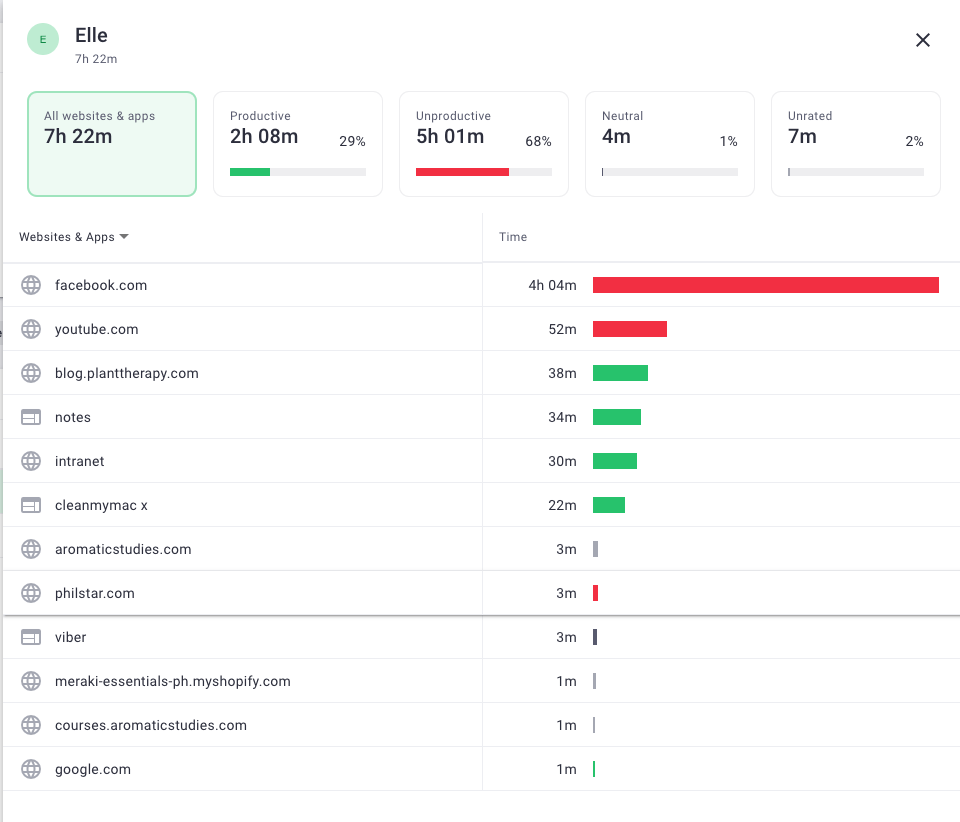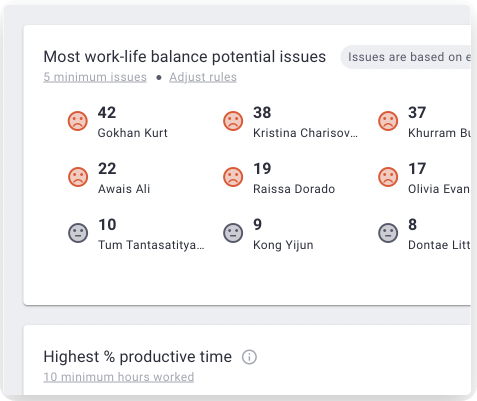Every company in the outsourcing sector needs a strategy to reduce costs, improve customer service, and boost performance.
Fortunately, by establishing the right outsourcing metrics, your Business Process Outsourcing company can quickly boost employee productivity and set your company up for business success.
In this article, we’ll cover 10 crucial outsourcing metrics and highlight three benefits of tracking them.
Let’s dive in.

10 outsourcing metrics your BPO should track today
Outsourcing metrics are measurable values that show a BPO company how they’re progressing toward business goals. If a metric targets a business’s core competencies, it’s a key performance indicator (KPI).
BPOs can use different performance metrics to monitor specific business processes. For example, a software development BPO could monitor a KPI like user satisfaction, while an HR outsourcing BPO monitors performance measures like the sourcing channel effectiveness of LinkedIn.
All metrics give you a bird’s eye view of your business activities, progress, and performance.
Here are 10 metrics outsourcing companies should track:
1. Customer satisfaction score
The Customer Satisfaction Score (CSAT) is a service quality metric measuring how satisfied customers are with your product, service, or general business interaction.
You can gauge customer satisfaction by asking customers to rate their overall satisfaction on a linear scale that ranges from 1-10, with a score of 10 meaning Very Satisfied.
Here’s how to calculate CSAT:

2. Net promoter score
Net Promoter Score (NPS) is a customer loyalty metric that measures how likely customers are to recommend your BPO’s product or service to others. Similar to CSAT, Customers are required to rate their likelihood of recommendation on a scale from 1-10:
- Promoters: Responded with 9-10.
- Passives: Responded with 7-8.
- Detractors: Responded with 0-6.
Here’s how to calculate NPS:

Any score above zero is considered good, while any score above 50 is considered excellent.
3. Customer churn rate
Customer Churn Rate is a quality assurance metric that shows the total percentage of customers who have chosen to stop doing business with a BPO vendor over a specific period.
This is an important metric to track since even a tiny increase in churn rate can result in revenue losses for your company. Keeping an eye on this metric can help your BPO determine the reasons behind the churn rate before it compounds over time.
Here’s how to calculate the customer churn rate:

Ultimate guide to call center metrics: Discover which metrics are the most important to success and how to use KPIs to manage a remote or hybrid workforce.
4. Service level metrics
A service level agreement (SLA) defines the level of service a customer expects from a supplier. BPO clients may use this outsourcing contract for vendor management and should include service-level metrics and appropriate penalties if SLAs aren’t met. As a BPO owner, you may consider providing service credits to compensate customers – paying a pre-specified sum of money to the customer whenever a service level isn’t achieved.
Here are some standard service level key performance indicators:
- Service availability: Measures the time the service is made available to the customer compared to the time the BPO vendor promised to keep the service available.

- Defect rates: The percentage of errors in significant deliverables, for example, when an information technology BPO makes coding errors or when supply chain delays occur.

- Average response time: Measures the average time a customer has to wait for a response from a call or contact center.

5. Total cost reduction
Cost Reduction is a critical procurement KPI that helps businesses reduce unnecessary expenses. These cuts may impact the company’s level of service – for example, a reduction in staffing.
Here’s how to calculate total cost reduction:

6. Cost savings
Cost Savings tracks any decreases in spending that don’t negatively affect the level of service your business provides. For example, employing a virtual assistant to take over admin tasks instead of hiring an in-office, full-time assistant.
Here’s how to calculate cost savings:

7. Actual costs
Actual Costs is a project management metric that measures the total amount spent on an outsourcing project. This includes salaries, materials, application development, equipment, rent, and more. This baseline metric can help any BPO service provider make accurate financial projections.
Here’s how to calculate actual costs:

8. Employee retention
The employee retention rate is a human resources KPI that measures the percentage of employees who stayed with the company throughout a specific time period. This metric tells BPOs how well they keep their employees engaged and happy.
Here’s how to calculate the employee retention rate:

Here are seven practical strategies to improve employee retention.
9. Human capital return on investment
Human Capital Return on Investment is a recruitment metric that measures the financial value added by the workforce as a result of the money spent on employees.
Here’s how to calculate HR ROI:

10. Attendance and schedule adherence
This metric compares the total minutes a call center agent worked against the total scheduled minutes. This includes call time and scheduled activities like meetings and training.
BPOs must monitor attendance to manage staffing levels and ensure every employee shows up on time. This way, every agent gets the same break time, and no agent is under or overworked.
Here’s how to calculate schedule adherence:

Learn how to conduct employee attendance evaluations.
But how do you keep track of your employees’ working hours?
Simple: by investing in time tracking and productivity monitoring software like Time Doctor.
What’s Time Doctor?

Time Doctor is a robust employee time tracking and performance management tool used by large companies as well as by small and midsized businesses across the world, to track employee performance and boost productivity levels.
Case Study: How Time Doctor helped Eufonie boost employee engagement and client retention
Eufonie is an offshore BPO vendor with headquarters in Madagascar. During the COVID-19 pandemic, the BPO aimed to gain deeper insights into their remote team while maintaining employee autonomy and strategic flexibility.
Using Time Doctor, this BPO boosted customer retention, employee engagement, and overall productivity.
Here’s how:
Eufonie used Time Doctor’s screencast feature to keep their clients in the loop and identify where agents needed further training.
They also used Time Doctor’s time tracking feature and productivity reports to better manage workloads, which led to a 30% increase in overall productivity.
Eufoenie’s clients were also satisfied since they had access to the client login feature to track what agents were working on in real-time.

Key features
Here are some of Time Doctor’s main features:
A. User-friendly time tracking options
Time Doctor provides two time tracking options: interactive and silent.
The interactive time tracker requires agents to track time by physically clicking start and stop. The app will only collect time data while the timer is on.
The silent timer automatically starts tracking time when the agent turns on their computer. Agents can also categorize their time entries for specific clients, billable tasks, and more.
BPO service providers can use this feature to track metrics like:
- Employee capacity: Shows you which employees are at the risk of burnout and which are managing their workload well.

- Employee billable percentage: Compares an employee’s total billing time to the employee’s internal cost to the company.


B. Work scheduling
Time Doctor gives managers and admins deeper insight into in-house and remote employees’ work schedules and attendance data with the work scheduling feature.
Here’s what you can do with the scheduling feature:
- Create unique schedules for each agent
- Add or modify a single shift or make bulk edits.
- Create flexible shifts for any period up to a week.
- Access comprehensive attendance reports.

C. Web and app monitoring
Time Doctor displays the specific apps and websites your employees visited during work hours.
It also assigns each website and application a productivity rating:
- Productive
- Unproductive
- Neutral
- Unrated
You have the option of determining which apps and websites should be categorized as ‘unproductive.’ This way, your marketing BPO team can access social media apps without the activity being flagged.

D. Comprehensive productivity reports
Time Doctor generates a wide range of productivity reports, like:
- Activity reports: Track the time employees spend active, idle, or unproductive.
- Hours reports: Monitor the total hours each employee tracked in a day or selected period.
- Projects & tasks reports: See the hours tracked for specific projects and tasks.
- Timeline reports: Get a visual timeline of every employee’s workday.
- Web and app usage reports: See which websites and apps your employees accessed while on the clock. This report can be used to monitor performance benchmarks like unproductive time.
- Attendance reports: Monitor when employees were present, absent, or late for work. This report is excellent for monitoring employee engagement metrics like absenteeism rates.
- Custom exports: Send custom reports to your clients to keep them in the loop, boosting customer retention.

E. Employee work-life balance insights
Time Doctor’s real-time dashboards display insights into employees with the most work-life balance issues. This includes employees who:
- Work too many hours during the week.
- Work late hours.
- Work outside their stipulated shift.
- Work on weekends.
Staying ahead of employee burnout is crucial since it can lead to decreased employee engagement, higher churn rates, and lower company outputs.

Here are some related articles about Time Doctor’s powerful features.
3 key benefits of using outsourcing metrics
Factors like higher procurement costs, integration challenges, the threat of opportunistic behavior, and rising transaction and coordination costs often impact a business’ outsourcing decision.
As a result, it’s in the best interests of any outsourcing vendor to reduce the above risks and drawbacks to create the best outsourcing arrangement possible.
Fortunately, BPOs can improve relationships with all stakeholders by selecting the right outsourcing metrics.
Here are three ways outsourcing metrics can boost your BPO’s organizational competitiveness:
1. Encourage focus on high-priority issues and goals
By communicating the right outsourcing metrics, you can inform everyone in the organization about the high-priority tasks they should be focusing on. This way, your BPO can achieve core business outcomes.
Additionally, metrics clearly communicate to employees what results are expected before and after the project is completed. This can encourage employees to take the initiative – without management having to call a meeting.
2. Improves employee performance
Some employees might not perform to the best of their ability since their progress and performance aren’t tracked.
As a result, introducing metrics that numerically track your employees’ performance in real-time can encourage them to perform better and achieve success.
For example, let’s imagine that your goal for the call center manager is to improve the team’s first contact resolution rate. By tracking metrics, you’ll see the exact number of customer issues resolved on the first call by comparing the previous month’s customer issue analytics with the current month’s data.
Explore these 10 other ways to improve work performance.
3. Identify problems ahead of time
Outsourcing metrics can give you real-time insight into the health of any business process. This way, you can make informed business decisions.
For example, if the employees at an IT outsourcing BPO spot an increase in their average issue handle time, they can quickly inform the CIO and resolve the issue before it affects their IT services.
Key takeaways
Tracking the right outsourcing metrics can dramatically improve your BPO’s performance and help it achieve success on many fronts like employee engagement, customer satisfaction, and cost reduction.
And while you could solely rely on a balanced scorecard to keep an eye on your BPO’s metrics, you’d be missing out on the comprehensive accountability system that Time Doctor provides.
Using Time Doctor, your BPO will have everything it needs to accurately monitor and improve various core competencies.


